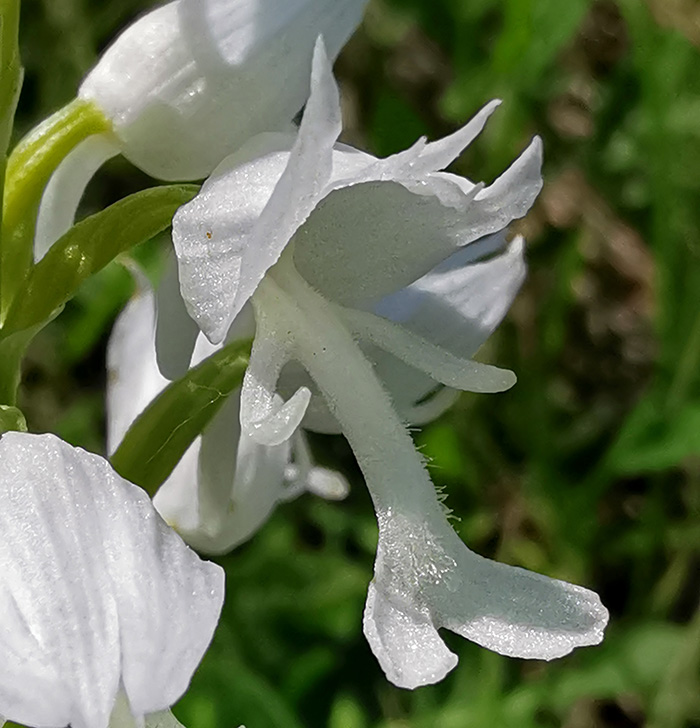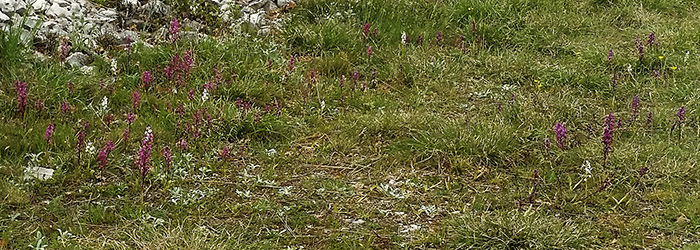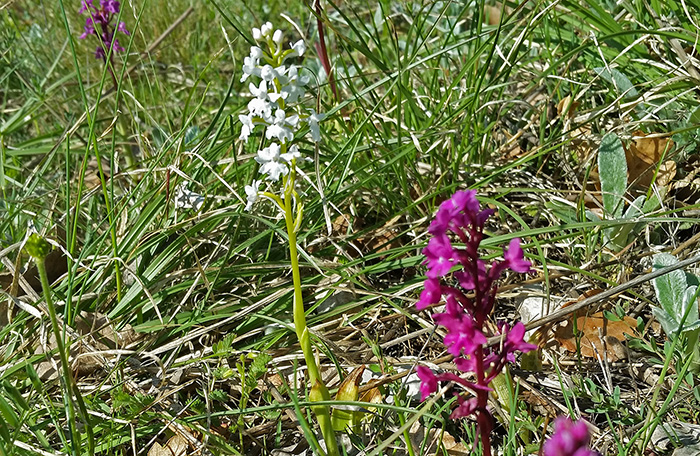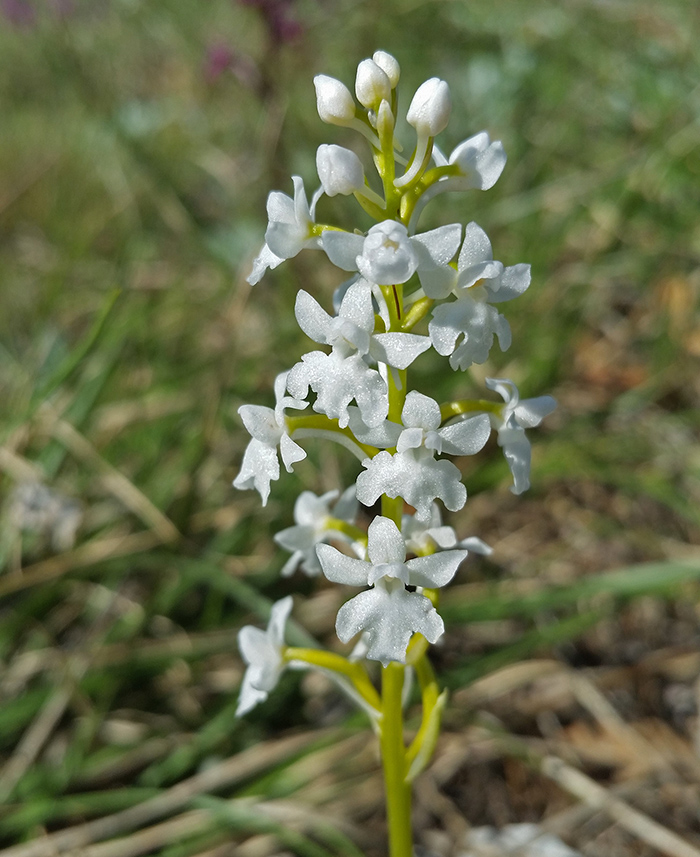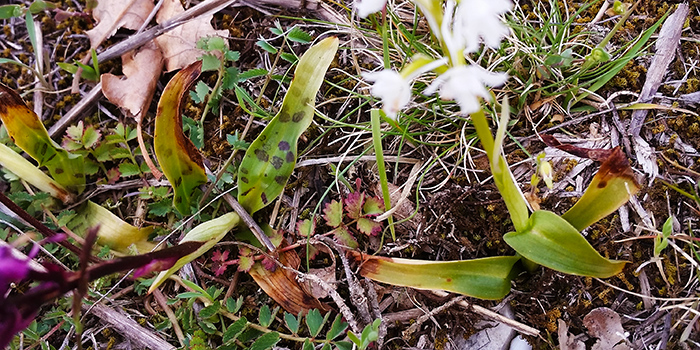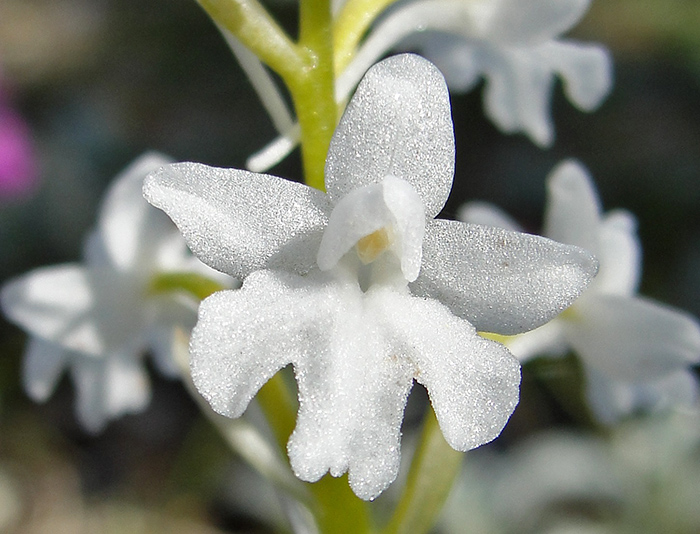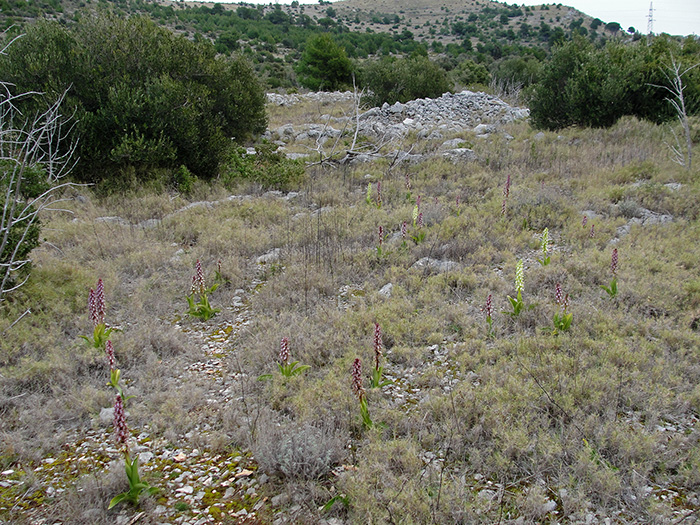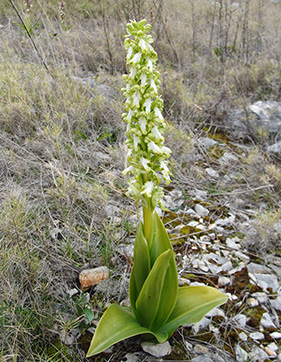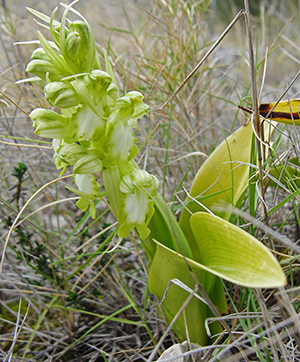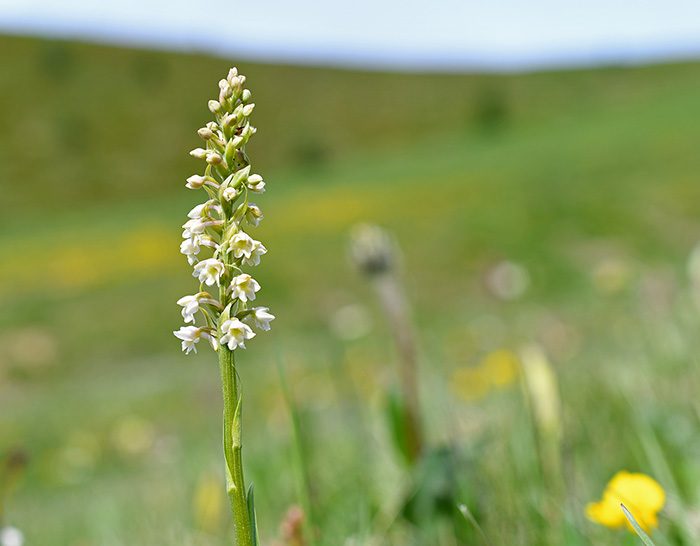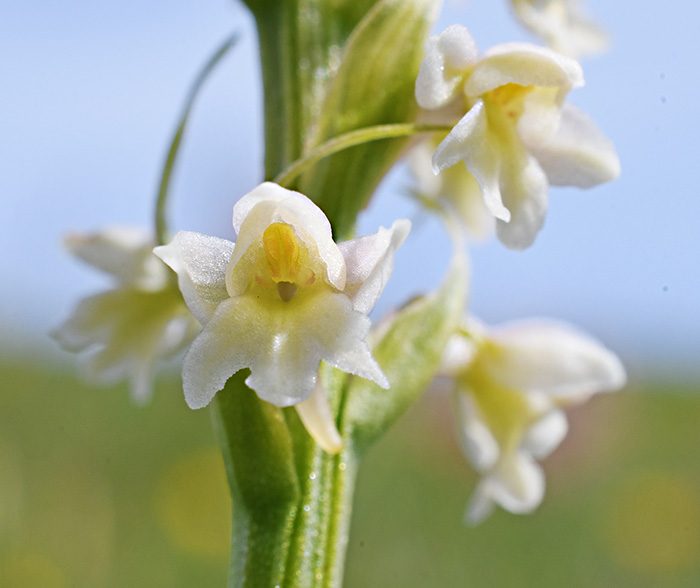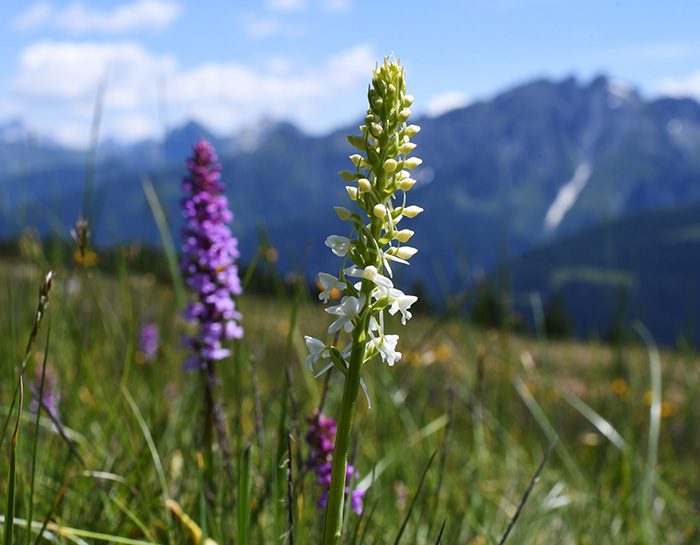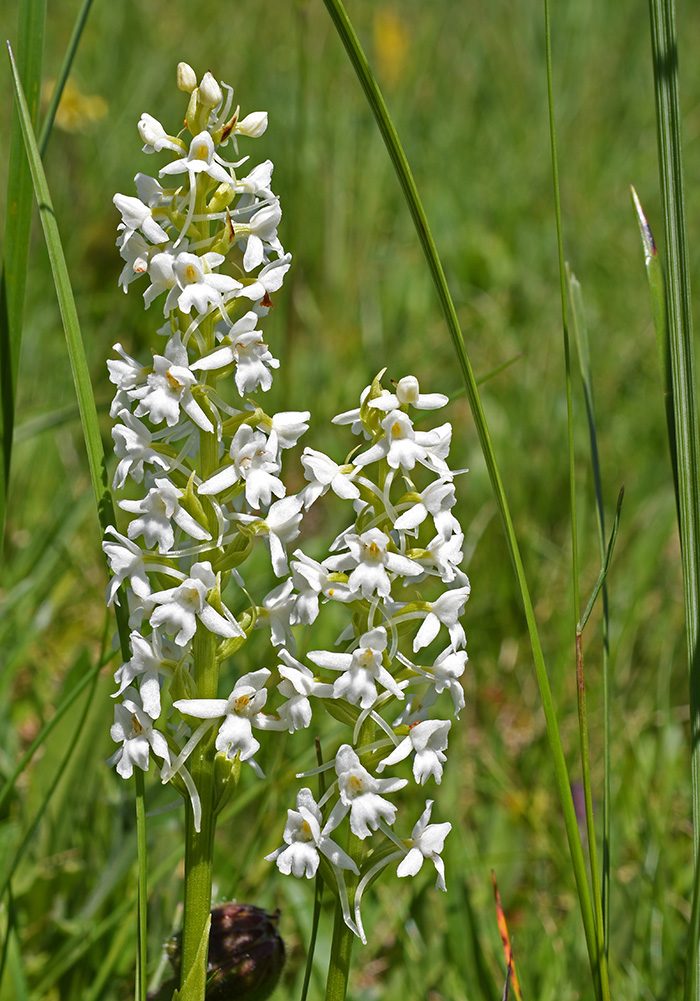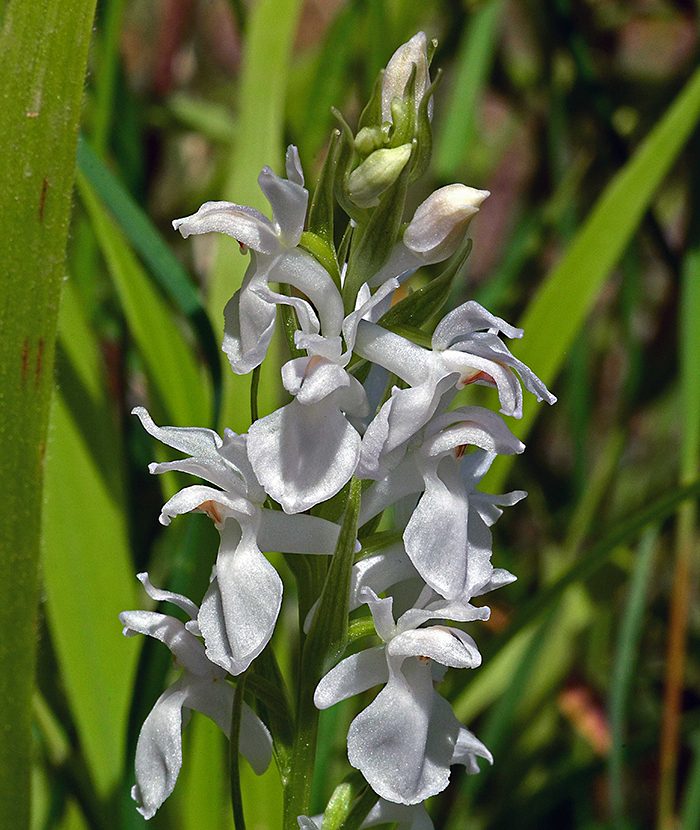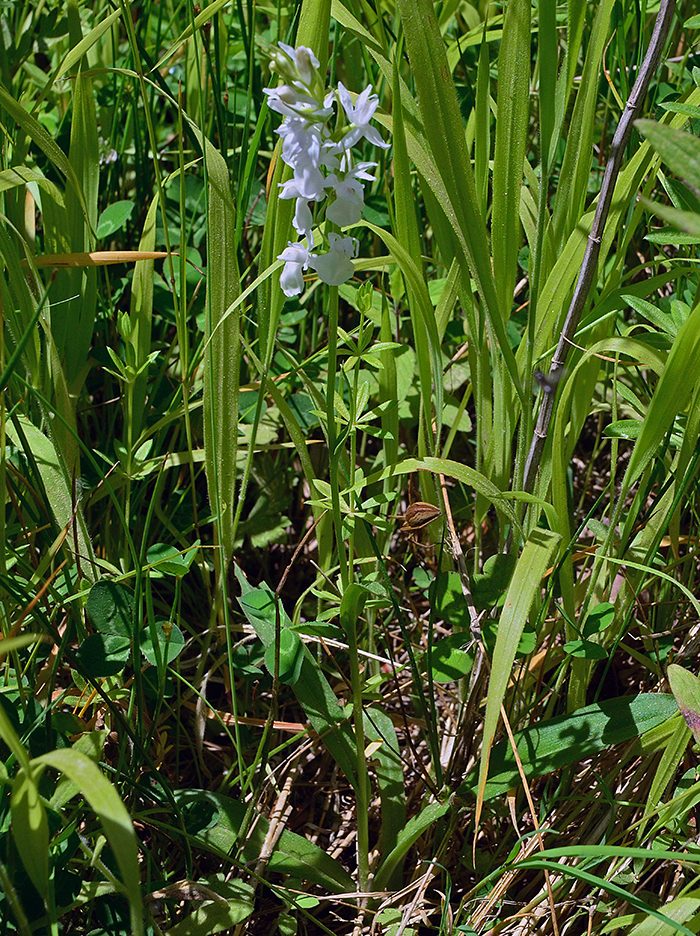Im Jahr 2006 habe ich zum ersten Mal eine weiß blühende Orchis militaris auf einer Magerwiese in der Nähe von Frankfurt gesehen. Sie war auch in fünf folgenden Jahren immer da, zum letzten Mal 2010. Dann verschwand sie, keine Spur einer Albiflora-Form unter den mehr als 100 Orchis militaris auf diesen Wiesen. Bis zu diesem Jahr, als sie etwa fünf Meter vom Standort der ersten Pflanze entfernt wieder blühte.
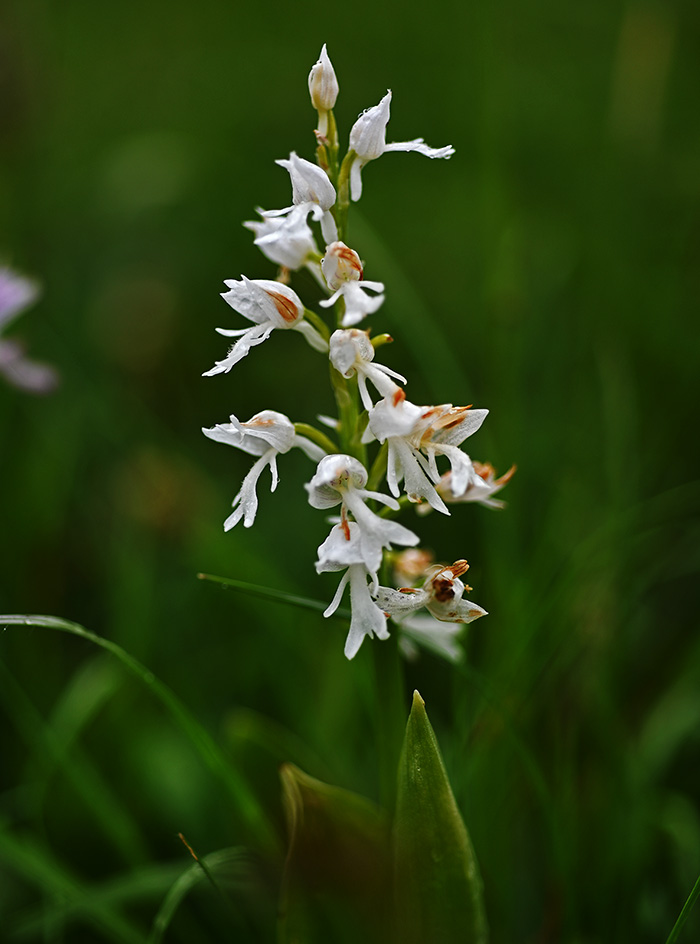
Nach dem ersten Drittel des Monats Mai war sie schon am Abblühen. Der Orchideenexperte Werner Hahn sagte mir, dass die Blüte von Orchis militaris an diesem Standort in den 1980er Jahren erst etwa Mitte Mai begann – ein klares Zeichen für den Klimawandel in den letzten mehr als 30 Jahren.
Aber es bleibt die Frage: Was ist der Grund, dass die Albiflora-Form nach zehn Jahren ein Comeback feiert? Samen der weiß blühenden Pflanze könnten sich auf dieser Wiese verbreitet haben. Die Blütenfarbe wird von dominanten Allelen vererbt. Aber es bleibt immer die kleine Wahrscheinlichkeit, dass das genetische Merkmal einer weißen Blütenfarbe in einer Population von mehr als 100 Farben mit der Standardfarbe zum Ausdruck kommt.
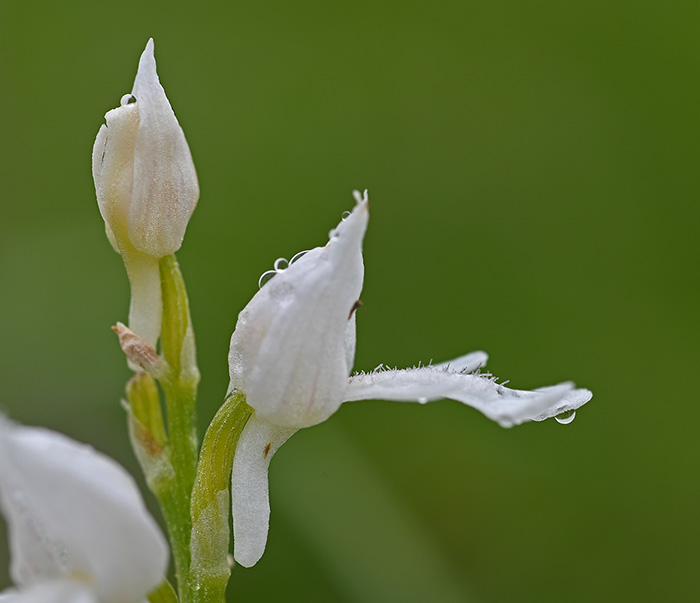
Die Wahrscheinlichkeit von Albiflora-Formen is Populationen von Orchis militaris liegt nach meiner Schätzung bei etwa 1/1000. Im Mittelrheintal blüht gerade diese schöne Pflanze:
